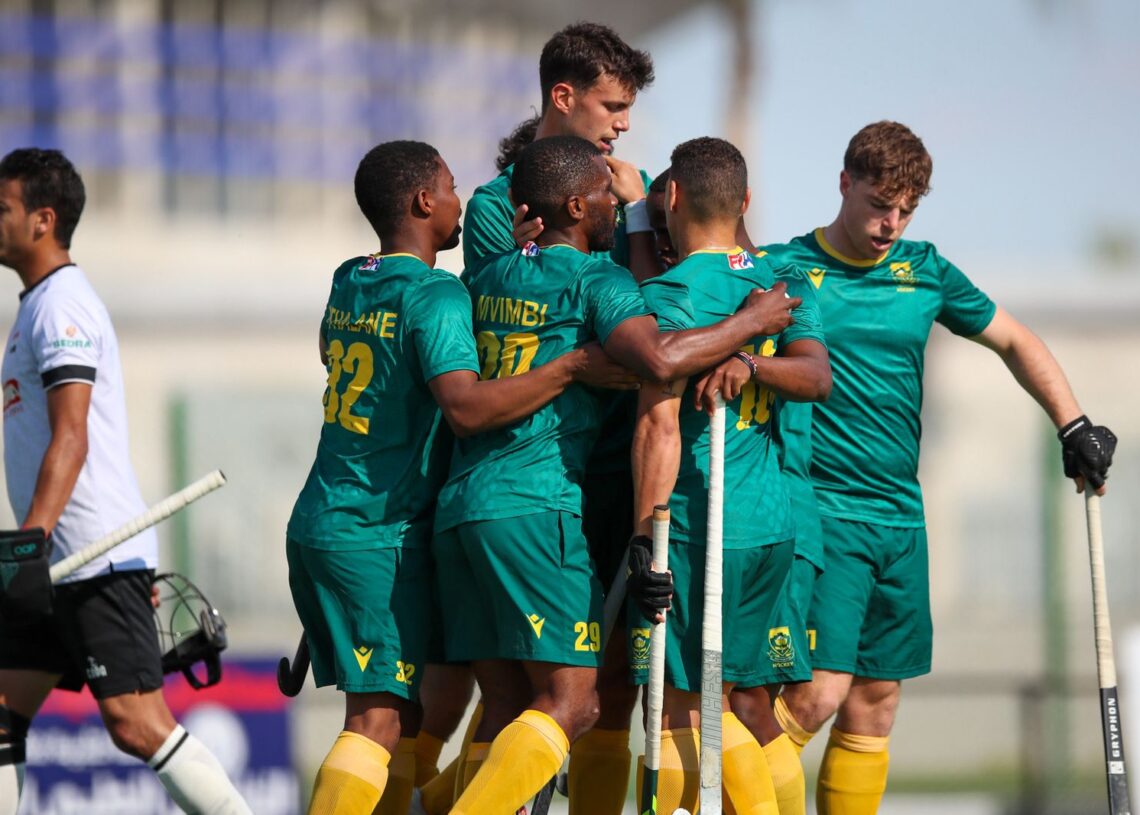The rivalry delivered again as South Africa and Egypt fought to a breathless 3-3 draw in Ismailia, a contest that captured the drama and skill that defines the African Hockey Classic 2025. From the opening whistle the intensity was unmistakable, and by the final hooter both teams had traded waves of momentum, brilliant finishing and vital saves that kept a raucous crowd on edge.
South Africa, the defending champions, struck first through Calvin Davis, who buried a low drag flick into the bottom corner from a penalty corner. It was a clean execution of a set piece, a reminder that accuracy under pressure often decides heavyweight matchups in African hockey.
The visitors then had to endure a stretch that tested their resolve, as the game grew in physicality and they navigated several card suspensions. Egypt ramped up the pressure and earned a penalty stroke, but debutant goalkeeper Cullin de Jager produced a superb save, a moment that felt like a hinge point in a tight first half.
With the immediate danger averted, South Africa doubled their advantage, and it was captain Dayaan Cassiem who provided the spark. Finding a sliver of space, Cassiem whipped a brilliant reverse-stick strike into the net, a finish that showcased his confidence and leadership on a tense afternoon.
Egypt refused to wilt, and their response was immediate, a sign of the steel that has come to define this fixture. Mostafa Ragab pounced on a lapse in defensive concentration to cut the deficit before halftime, injecting belief and setting up a furious second half.
After the interval, Egypt pushed forward with renewed purpose and found their equaliser through Mohamed Adel from a penalty corner. The rhythm shifted again as the hosts began to dictate the terms, their set piece sharpness becoming a reliable platform for pressure.
That pressure told when Mamdouh struck from another set piece to make it 3-2, a turnaround that spoke to Egypt’s composure in critical moments. The crowd swelled with noise as the hosts sensed a statement win, while South Africa were forced to regroup under the weight of momentum against them.
Champions are judged by their response to adversity, and South Africa found a way back. Cassiem once again took responsibility, blasting home another reverse-stick effort to level at 3-3, a captain’s finish that carried both precision and nerve.
Both sides chased the winner in the closing stages, each stretching the field and putting bodies on the line. Neither could find the decisive touch, and when the hooter sounded the draw felt like a fair outcome for two teams that matched each other in ambition and execution.
A rivalry that keeps its edge
There are few fixtures on the continent that combine technical quality with such emotional stakes, and South Africa versus Egypt remains the pinnacle of African hockey rivalry. The meeting in Ismailia offered pace, risk, and tactical gambits, plus the kind of individual brilliance that tilts tight matches.
South Africa’s early command owed much to clinical set piece play and the confidence of a team accustomed to big moments. Egypt countered with energy and purpose, and as the cards accumulated for the visitors, the hosts found attacking lanes that were not there in the opening quarter.
How the goals unfolded
- Calvin Davis opened the scoring with a low drag flick from a penalty corner,
- Cullin de Jager saved a first half penalty stroke to protect the lead,
- Dayaan Cassiem made it 2-0 with a brilliant reverse-stick strike.
- Mostafa Ragab pulled one back for Egypt before halftime,
- Mohamed Adel equalised from a penalty corner early in the second half,
- Mamdouh pushed Egypt ahead from another set piece.
- Dayaan Cassiem struck again with a second reverse-stick finish,
- both sides pressed late for a winner,
- the match ended level at 3-3.
Performers who shaped the night
Cassiem’s brace stood out not just for the quality of the finishes but for their timing, each goal delivered when his team needed calm and conviction. In a match where momentum swung quickly, his influence was decisive in keeping South Africa in the contest.
De Jager’s penalty stroke save was equally significant, an intervention that prevented Egypt from seizing control during a turbulent phase for the visitors. For a debutant to deliver under that kind of pressure is noteworthy, and it gave South Africa a platform to build from before the interval.
On the Egyptian side, Adel’s penalty corner finish highlighted a reliable route to goal, a facet that allowed the hosts to tilt the second half. Ragab’s first half strike brought belief back into the stadium, while Mamdouh’s finish from another set piece rewarded the persistence of a team that kept probing.
Tactical currents and set piece stakes
Set pieces carried outsized influence, from Davis’s opening drag flick to Adel and Mamdouh scoring during Egypt’s surge. For coaches, the tape will show the value of well-drilled routines and the small margins that separate a clean clearance from a decisive rebound or deflection.
Discipline also mattered, as South Africa’s card suspensions forced tactical adjustments and a more conservative posture at times. Egypt’s ability to leverage that window of advantage with pressure and circle entries underscored their game management in critical passages.
Turning points that defined the draw
There were three moments that bent the narrative. De Jager’s penalty stroke save halted Egypt’s push at a vulnerable juncture for South Africa, Cassiem’s first goal stretched the gap to two when the match felt on a knife edge, and Ragab’s response just before halftime changed the tone entirely.
The second half belonged to Egypt for a spell, with Adel’s equaliser igniting belief and Mamdouh’s finish completing a comeback that looked set to stand. Yet the mark of a champion side is the refusal to let the match slip, and South Africa found their level through the calm of their captain.
What the result tells us
The draw fits the story of a rivalry where neither side stays down for long, where moments of brilliance are quickly answered. For South Africa, the point comes with lessons about discipline and conversion, their early chances from penalty corners and open play could have put the game to bed.
For Egypt, there is vindication in the effectiveness of their set pieces and their resilience after falling two behind. The composure to execute under pressure will please the hosts, who showed they can turn control into goals when momentum is with them.
Key takeaways from Ismailia
- South Africa’s early precision met Egypt’s second half surge,
- set pieces defined the scoring on both sides,
- leadership and goalkeeping heroics kept the match in balance.
Voices of the contest and its wider meaning
Every clash between these teams brings something new, yet the themes remain familiar, pace, nerve, and the ability to seize the moment. The 3-3 in Ismailia felt like another chapter that will be remembered when these nations meet again.
For supporters, this was a reminder of why the fixture stands at the summit of African hockey. The personalities were front and center, from Cassiem’s poise to the cool of de Jager under the bar, from Ragab’s spark to Adel’s set piece certainty.
What comes next
South Africa now turn their attention to the next fixture as they continue their campaign to defend their continental crown. The draw keeps them in stride while sharpening the focus on set piece efficiency and game management in the critical middle phases.
Egypt will take pride in the comeback and the way their structure fed their scoring. With the crowd behind them and confidence affirmed, they will know that the formula is robust, stay disciplined, press smartly, and trust the routines that paid off.
Final word
In Ismailia, the African Hockey Classic produced a six goal spectacle that held its shape as a fair result. It was a match of brilliant finishes, crucial saves, and the inevitable tide swings that make this rivalry essential viewing across the continent.
On another day, one chance might have fallen differently, one stick might have met the ball a split second sooner. On this day, the story was balance, and that balance felt right for two teams that so often bring out the best in each other.






